Want some fun facts about Arizona?
America’s “Grand Canyon State,” certainly lives up to its title but Arizona surprisingly has even more to offer than this world wonder!
Keep reading for more fun facts about Arizona including its nature, culture, and history!
From its native cactus species to its vast range of rattlesnakes, the biodiverse canyons, forests, deserts, and charming small towns, Arizona has so much to offer its residents and visitors!
A drive through this state could start with ski resorts and Grand Canyon National Park in the North, national forests all the way through the middle, and the Sonoran Desert in the south with some amazing craft breweries all along the way.
If you’re making the trip, be sure to learn and respect the Native American Indian reservations along the way, many who will welcome you to try their local food and arts.
Interested in learning more?
This article is chock full of Arizona’s finest facts so read on before hitting the road!
1. Arizona is a part of the “Four Corners” states.
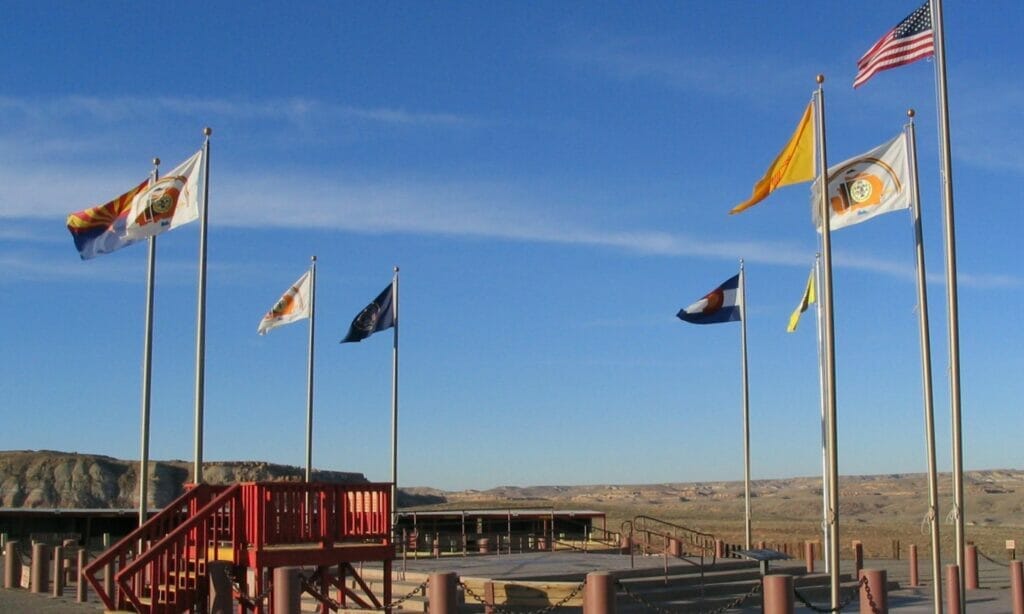
Arizona shares the Four Corners region with Utah to the north, Colorado to the northeast, and New Mexico to the east.
This means if you stand at the intersection of approximately 37° north latitude with 109° 03′ west longitude, where the boundaries of the four states meet, you can stand in 4 states at once!
There is a monument marking this location and it is the only place in the United States where four states meet!
The United States acquired the four corners region from Mexico after the end of the Mexican–American War in 1848 and now most of the region belongs to semi-autonomous Native American nations.
How’s that for a cool fact about Arizona?!
2. Arizona is the 48th state of the Union.

Last but certainly not least, Arizona was the very last of the contiguous states to be admitted to the Union in 1912 (with Hawaii and Alaska following much later in 1959)!
Arizona remained a primarily rural state area with an economy based on cattle, cotton, citrus, and copper at this time.
The population of the state grew in 1945 when more retirees and young families moved from the Northeast and Midwest seeking sunshine and lower costs of living.
3. There are ski resorts in the areas of Flagstaff, Alpine, and Tucson.
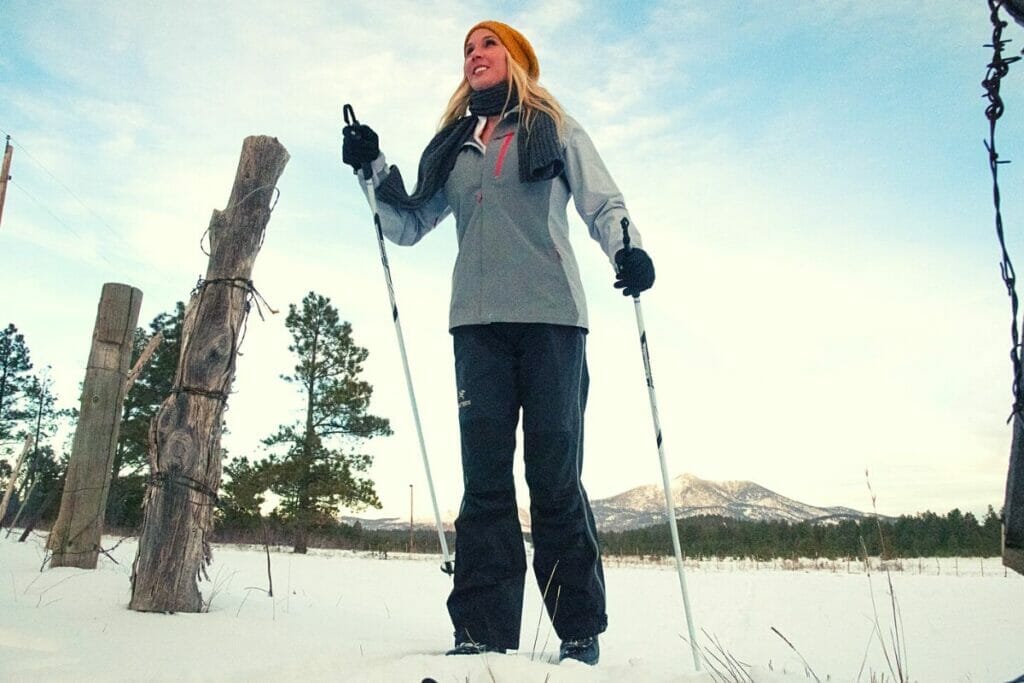
Arizona is one of the few places in America where you can go from basking in the sunshine to tearing up the powdery snow lined mountains all in the same day!
If you’re looking for skiing, check out the Northern part of the state where there are some impressive ski resorts where you’re sure to find some slopes that suit you!
The best thing about skiing in Arizona, as prices are much more affordable than other states!
4. Arizona is home to the Grand Canyon!

The Grand Canyon is one of the world’s seven natural wonders and you better believe it deserves the accolade!
It is a jagged 277-mile-long gorge carved by the Colorado River (6 million years ago!!!) and can reach depths of 1 mile long. Such a fun fact about Arizona!
With 1.2 million acres of land and water (that’s bigger than the entire state of Rhode Island), there are endless top-notch views to take your breath away.
In addition to the Grand Canyon there are several national forests, national parks, and national monuments.
5. Saguaro cactus blossoms are the state flower of Arizona.
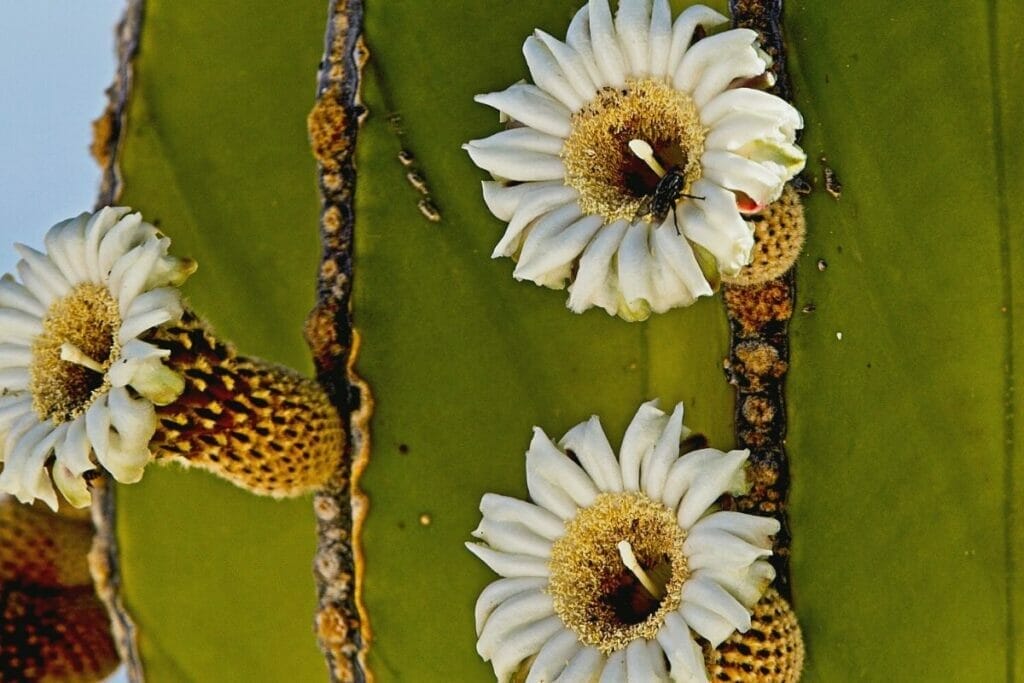
The giant saguaro cactus (Cereus giganteus) is indigenous to Arizona so it makes perfect sense that its big beautiful yellowish blooms would be the official state flower.
The Saguaro cactus grows to a height of forty to fifty feet and lives to an age of 150 to 200 years.
Harming a saguaro cactus in any way is illegal in Arizona, and during construction projects, special precautions must be taken to move every saguaro affected.
What’s the most interesting fact about this species you ask?
Well, it can only be found in southern Arizona (more specifically in the Sonoran Desert but more on that later).
6. About 25% of the state of Arizona is made up of Indian reservations.

The Native American Indian reservations in Arizona serve as the home of 27 federally recognized Native American tribes, including the Navajo Nation.
This is the largest percentage in the state and the United States, with more than 300,000 citizens.
While most Arizona reservations and tribal communities welcome visitors to experience their culture, tourism opportunities vary among the tribes so make sure to do your research and know the rules before making a visit.
There are also many museums in Arizona showcasing the rich cultures of the Native Americans.
7. Arizona is home to one of the most well-preserved meteorite impact sites in the world.
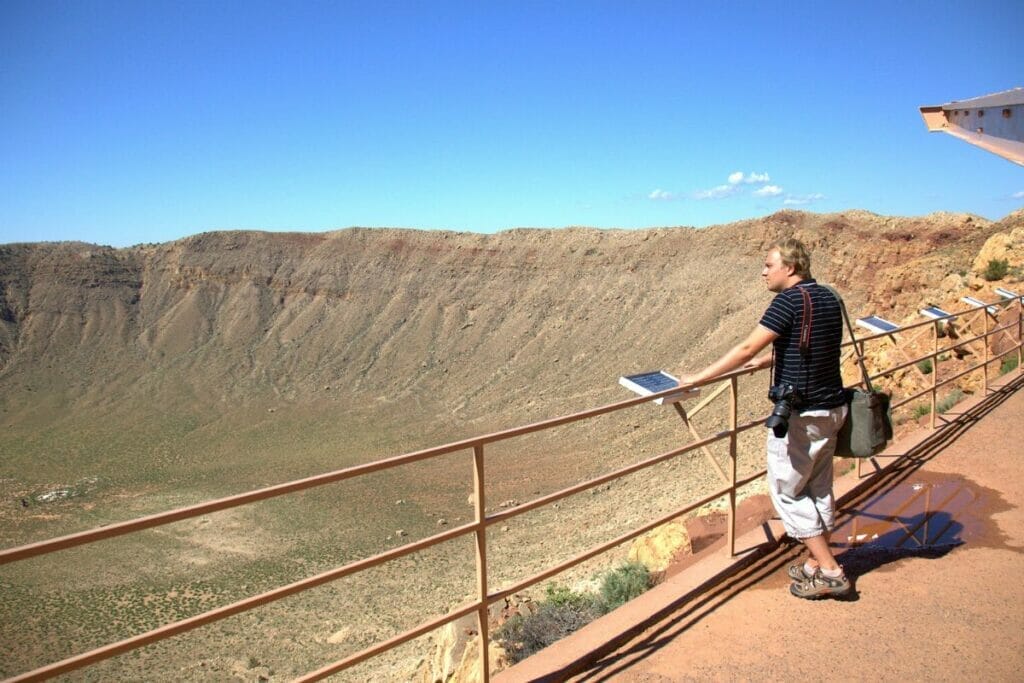
Sitting in the high plains of the Colorado Plateau is the Barringer Meteorite Crater (better known simply as “Meteor Crater”).
The crater was created around 50,000 years ago by the Canyon Diablo Meteorite and is a gigantic hole about 25 miles (40 km) west of Winslow.
Unfortunately, the crater is privately owned by the Barringer family so it is not accessible to the public but it is still officially listed as a National Natural Landmark.
8. Arizona does not observe daylight savings times.

When the rest of the contiguous United States is worried about moving clocks forward or backward and calculating how much sleep they’re going to lose; Arizona sits back without the worries.
This is because it is one of only two U.S. states (along with Hawaii) that does not observe Daylight Saving Time!
The state made the switch to permanent standard time in 1968.
One exception to this interesting Arizona fact, the large Navajo Nation in the state’s northeastern region does.
9. The cactus wren is the Arizona state bird.

The cactus wren is endemic to Arizona and can be found in deserts and arid foothills that have cactus, mesquite, yucca and other types of desert scrub.
They are the largest wren in the United States and build pretty big nests, too!
Each of their nests are about the size and shape of a football with an opening at the end so they can come and go.
They like to build their nests in cholla (a type of cactus) but can also build in palo verde, acacias (non cactus plants), saguaros (cactus), or even the hanging pot in your backyard!
10. Arizona contains some of North America’s oldest records of human occupation.

What an interesting fact about Arizona!
People have lived in the area that’s now considered the state of Arizona since at least 25,000 years ago.
To put that into context, that is before written history!
The first Native Americans arrived in Arizona between 16,000 BC and 10,000 BCE!
This civilization disappeared in the 1200’s, probably due to drought.
The history of Arizona as recorded by Europeans began when Marcos de Niza, a Franciscan, explored the area in 1539.
11. The Sonoran Desert is the most biodiverse desert in North America.

The Sonoran desert is located in southwestern Arizona (as well as part of California and Mexico).
In addition to the saguaro cactus, the signature plant of the desert, it also contains the most diverse vegetation of all of the North American deserts.
The Sonoran Desert has several areas of public land that you can visit, including Organ Pipe Cactus National Monument, Saguaro National Park near Tucson, and Casa Grande Ruins National Monument southeast of Phoenix!
12. Arizona is home to some strange animals!

Have you ever heard of the coatimundi, the javelina, or the jaguarundi!?
All of those are animals that can be found in Arizona!
The coatimundi is a raccoon relative with a striped tail (kind of like a lemur/raccoon crossover) that can be found around rocky canyons.
The javelina is a herbivore that lives in the southwest, it’s similar to a wild boar.
And, a jaguarundi is a type of wild cat that sneaks around the Sonoran desert!
13. Arizona’s Kitt Peak National Observatory, houses one of the world’s largest collections of optical and radio telescopes.
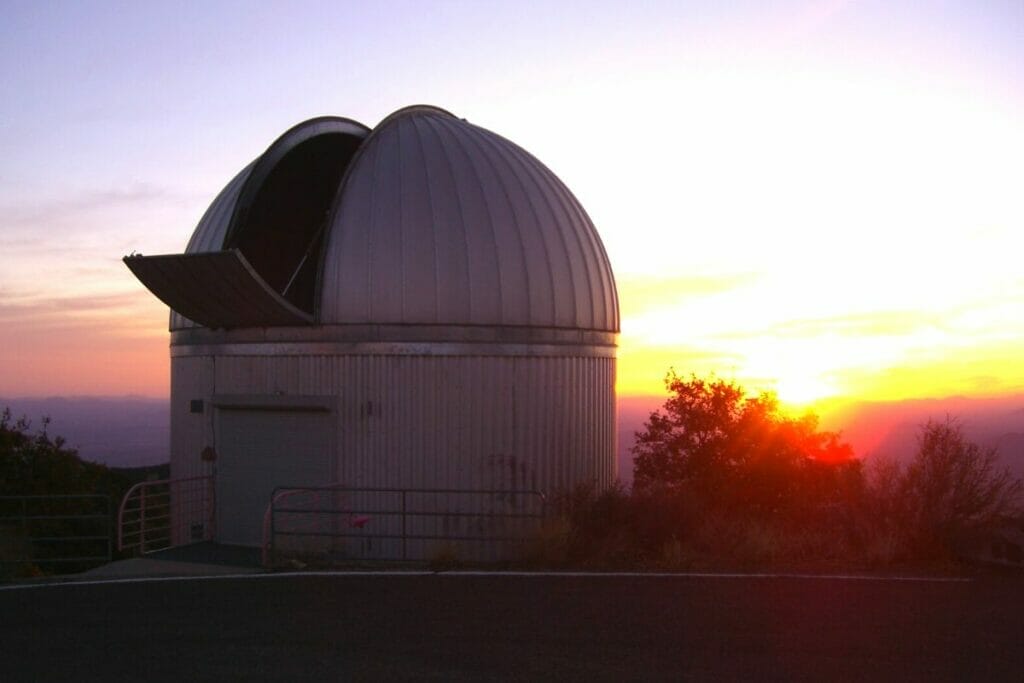
No stargazer will want to miss the Kitt Peak National Observatory which recently helped discover galaxies 12 billion light-years away!
Just 55 miles west of Tucson, the observatory houses more than twenty optical and two radio telescopes.
In June of 2022, the site had a very close call with a wildfire so if you’re planning a visit please plan to check the website before making the trip!
Cool fact though, you can still check out their website for online programs all about the stars!
14. Arizona is home to the famous Hoover Dam!

The Hoover Dam is a concrete dam in the Black Canyon of the Colorado River on the border between the U.S. states of Nevada and Arizona.
What’s so cool about a dam you ask?
Well, the dam creates America’s largest reservoir which covers about 248 square miles and is capable of holding some 28.9 million acre-feet of water (an acre-foot is equivalent to about 325,000 gallons).
Now, that’s A LOT of water.
When it was built in the 1930’s, it was the world’s tallest but has since been downgraded to the U.S.’s second tallest dam.
15. Phoenix, Arizona is the hottest city in the U.S.
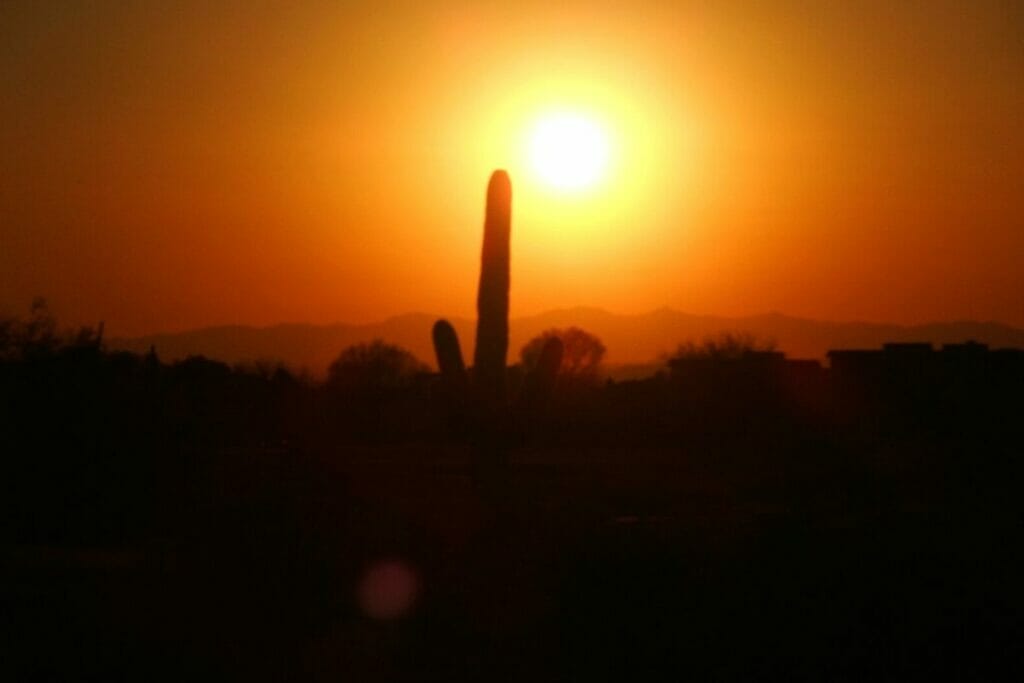
If a dry heat isn’t your thing, then plan to avoid the Arizona summer, especially Phoenix!
The hottest temperature on record in Phoenix is 122.0 F!
The city consistently ranks number one for the most days a year when temperatures rise into the 90s or 100s Fahrenheit (Miami, Florida is its biggest competition).
Due to its desert climate, Phoenix is naturally a hot place but it’s temperatures of been consistently rising due to global heating and urban development.
16. 15% of Arizona is covered by forests.
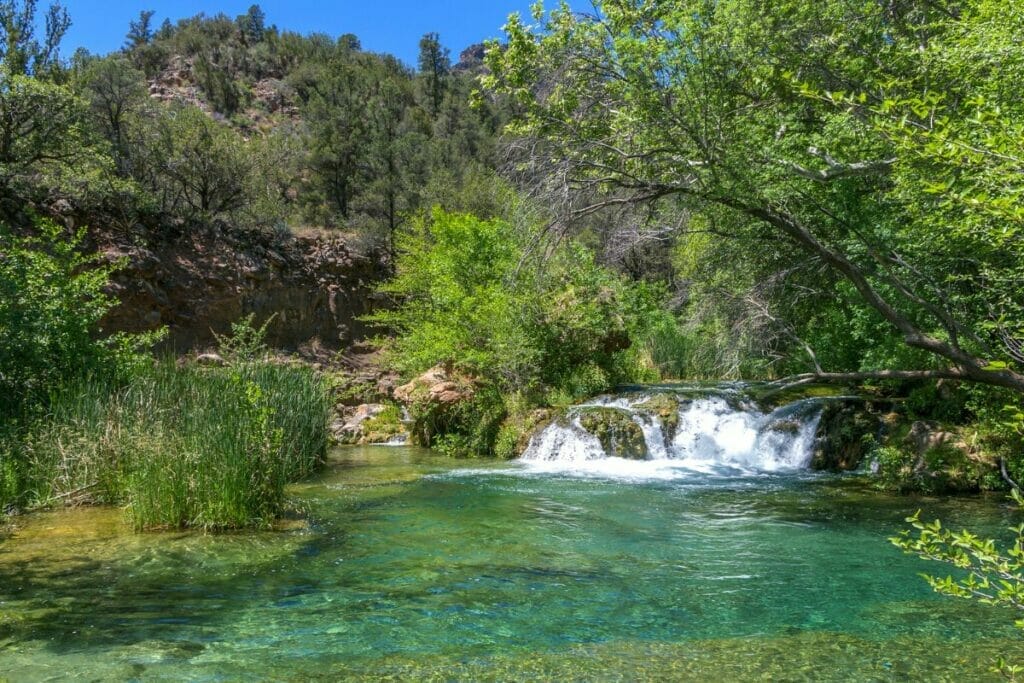
When you think of Arizona, your mind may imagine the rocky geography of the Grand Canyon or the Sonoran Desert but the state is also home to some of the largest national forests in the nation!
There are actually six national forests in Arizona with the largest being the 2.9 million acres of the Tonto National Forest (America’s sixth largest national forest).
According to the U.S. The Tonto is one of the most-visited “urban” forests in the United States with 3 million visitors annually.
17. There are 13 species of rattlesnake in Arizona!

Of the 36 different species of rattlesnakes on Earth, 13 of those species live in Arizona.
That’s more types of rattlesnake than any other state! Did you know rattlesnakes can only be found in North and South America?
The rattlesnakes most commonly seen in Arizona are the Mojave, black-tailed and Western diamondback species.
Although about 150 people are bitten by rattlesnakes in Arizona each year, according to Arizona Poison Centers, less than 1% of rattlesnake bites result in human deaths.
If you see a snake in Arizona, don’t panic! The best thing to do is distance yourself from it and warn others of its location.
18. Arizona is the nation’s sixth largest state in area.

Ok, you’re right, that fact isn’t very interesting but what is cool is that only about 17% of the entire state is privately owned.
The rest of the area belongs to Native American reservations, public forest and park lands, and state trusts.
According to the US Forest Service, 42% of the land is owned by the citizens of the United States and managed by the USDA Forest Service, the National Park Service, military organizations, and USDI Bureau of Land Management.
19. Arizona is home to 75+ licensed craft breweries (and growing).

Looking for somewhere to cool down after a day out in the Grand Canyon or Sonoran Desert?
Look no further than one of Arizona’s popular craft breweries!
The most popular breweries include Superstition, Bottle Logic Fundamental, and Alpine Beer Company.
Hey! Want more fun facts about the states? Check these out!
- 19 Fun Facts about California
- 19 Fun Facts about Colorado
- 19 Fun Facts about Arkansas
- 19 Fun Facts about Florida You Won’t Believe
- 29 Fun Facts about Georgia Most People Don’t Know!
- 21 Fun Facts about Maine
- 19 Michigan Fun Facts
- 39 Fun Facts about New York
- 19 Fun Facts about North Carolina
- 21 Fun Facts about Ohio
- 21 Interesting Facts about Oregon
- 49 Fun Facts about Pennsylvania
- 21 Fun Facts about Rhode Island (unique!)
- 21 Fun Facts about Utah
- 19 Interesting Facts about Washington State
- 51 Cool Facts about Wyoming
- 51 Cool Facts about Wisconsin
- 51 Cool Facts about West Virginia
- 51 Cool Facts about Virginia
- 51 Cool Facts about Vermont
- 51 Cool Facts about Tennessee
- 51 Cool Facts about South Dakota
- 51 Cool Facts about South Carolina
- 51 Cool Facts about Oklahoma
- 51 Cool Facts about North Dakota
Pin for Later!
Get the All-American Travel Secrets!
Don't miss out on America's hidden gems!
